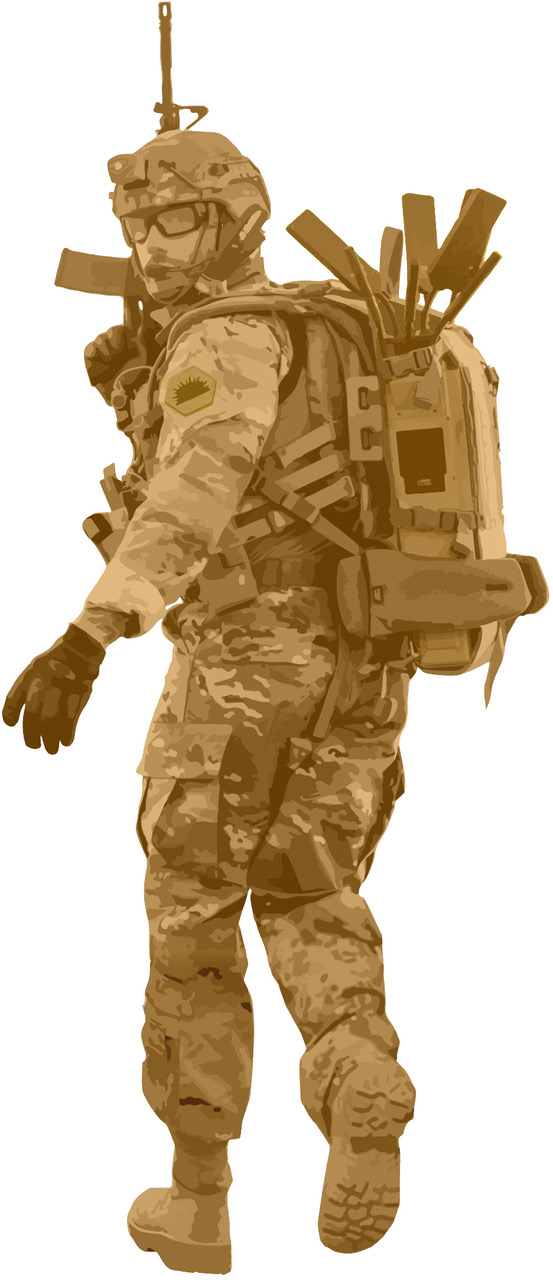Mountain View, CA. --First responders continue to face communications challenges, especially in remote areas and during disaster response scenarios, often preventing collaboration and the use of real-time information. To solve this, Defense Innovation Unit (DIU) – a United States Department of Defense (DoD) organization exclusively focused on accelerating commercial technology solutions– announced a 5G project, prototyping mobile ad hoc private 5G networks to provide reliable data and voice services to emergency responders operating anywhere, starting with the State of California.
“We are excited to partner with the Defense Innovation Unit,” stated Major General David S. Baldwin, The Adjutant General of California. “We believe this effort is the beginning of a transformation that will take civil and military emergency response teams from having multiple redundant radios in the field to having unlimited connectivity and enable each individual to use cutting edge tools to communicate and understand their environment.”

National Guardsman packing 4G/5G base station to communicate in private operation.
The idea for private 5G networks was proposed to the California National Guard in 2020 due to the immediate need to augment or replace two-way voice radio networks and trunked land mobile radio (LMR), with 5G voice and data services using a portable 5G network that could be deployed at a moment’s notice.
“Radios are becoming obsolete and getting everyone on-site a satellite phone is just impractical. Bringing a portable cellular network to the response site can extend the reach of cellular devices beyond carrier coverage. That will provide the full capabilities of commercial communication networks when conditions are favorable, and support local edge-hosted applications,” said Jeff Kleck, Director of the Cyber & Telecommunications Portfolio at DIU.
The project has the potential to have emergency responders show up to any site with personal or government issued mobile devices and use networked applications such as push-to-talk voice, geolocation, and live maps of their surroundings - all while outside the range of existing cellular networks. The first to arrive can simply bring the private network with them using a vehicle mounted, backpack, hand carried, or wearable node.
DIU is partnering with the California Military Department to procure commercially available, Citizen Broadband Radio Service (CBRS) based private wireless equipment for mobile deployments. This prototype has the potential to allow for immediate fielding of the capability while avoiding delays from spectrum policy debates.
A full 5G mobile network isn’t possible today because some of the industry standards involving dynamic cellular frequency allocation for 5G services are still being written, and some required components (eg. ultra low power 5G) aren’t yet available. The private 5G solutions provide a path towards a full 5G implementation, which will provide the necessary bandwidth for tomorrow’s emergency responder applications.
“California is no stranger to natural disasters in areas with spotty or no commercial cell coverage. Fielding a hybrid 4G/5G solution to support thousands of users, that can also be easily upgraded to full 5G speeds within the next few years, is critical to our mission as protectors of our residents rather than waiting for programs of record to become available,” said Brigadier General Steven J. Butow, Commander, California Air National Guard. “We should be leveraging the same agile, iterative approaches that companies use to deal with natural disasters.”
DIU has awarded contracts to two companies: Nokia and Somewear Labs. Their combined solutions will allow the California Military Department to quickly deploy a mobile cellular network that is compatible with the devices emergency responders use today and in the future, and give them the ability to create Bluetooth links to non-cellular devices nearby.
Nokia Innovations, a business unit of Nokia America, will provide the DoD with portable cellular radios, initially supporting standards-based 3GPP 4G/5G, which form a high speed, ad-hoc network in a variety of sizes and power outputs, in order to quickly blanket an area with cellular coverage. Working with Nokia partner, Fenix Group, the complete solution includes device provisioning, edge computing, and dynamic CBRS frequency allocation solutions, and is packaged in a low size, weight and power (SWaP) form factor.
Somewear Labs wearable devices extend a mobile cellular network at the edge over or around terrain, allows teams to move faster than the mobile cellular network deployment while remaining connected to it, and provides the necessary resilience to ensure safety critical communications continue in the event of equipment failure or dead spots by reverting to satellite network connections.
“DIU facilitated teaming arrangements among multiple companies to provide transparent roam-in to private 5G service that does not require replacing the commercial SIM card on bring-your-own-devices (BYOD). This is critical since most apps used for communication identify the user by their phone number, and if that number changes the user loses their identity,” according to Major General Jay M. Coggan, Commander, California State Guard. “In addition to the unfinalized standards for 5G operations in the unlicensed spectrum bands and chip shortage, one of the lesser-publicized obstacles to private 5G adoption has been the difficulty in supporting instant-roam-in of BYOD devices without re-provisioning.”
At the conclusion of a successful 1-year prototyping period, the solutions can be scaled to other DoD organizations through a production Other Transaction (OT) agreement.